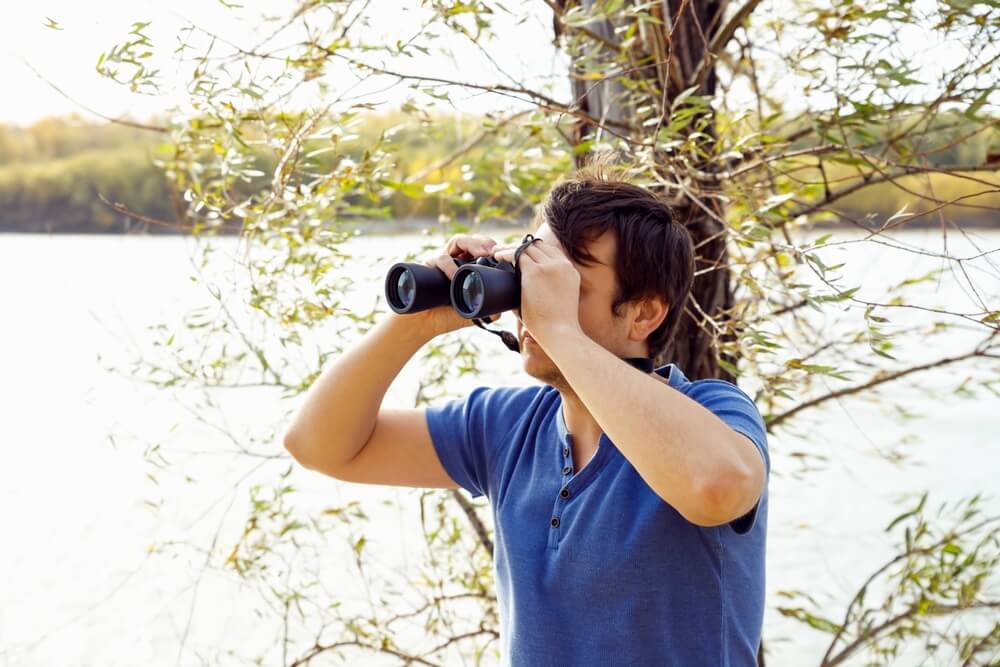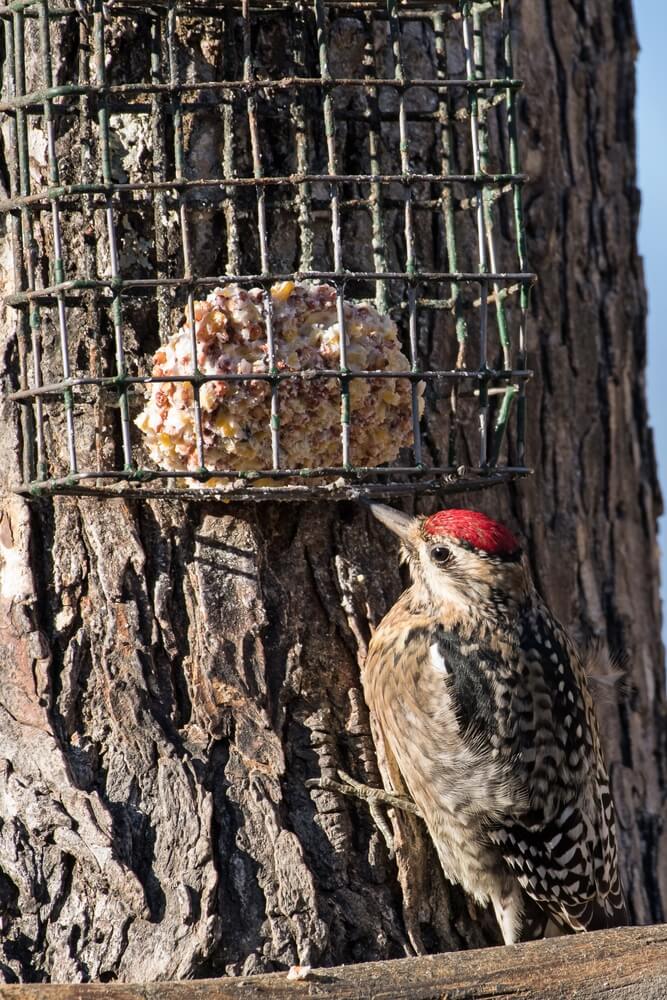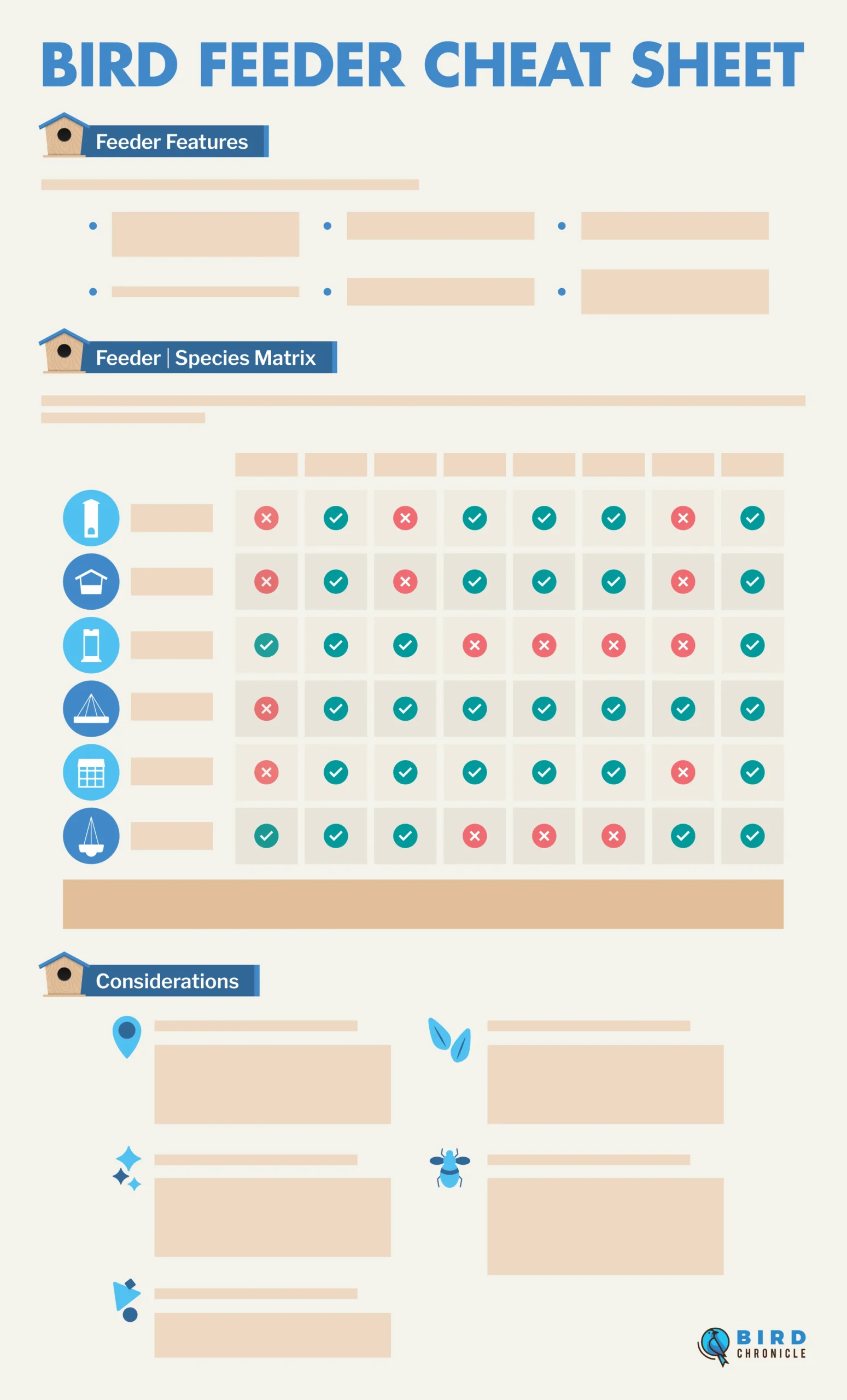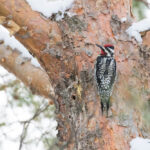If you are looking for a low-cost, peaceful activity that can be done anywhere, birdwatching is an excellent hobby to partake in.
Also known as birding, birdwatching, is an increasingly popular activity for all ages. It can be done for fun on your own or with other like-minded people. It is an excellent way to become acquainted with birds and nature.
This ultimate beginner’s guide will inform you of what you need, what to do, and how to identify the birds you spot in your backyard and on your adventures.
Equipment & Tools For Birdwatching
The following tools are not essential but can make your newly found birdwatching hobby extra enjoyable.
These tools will give you a much closer look at birds and allow you to learn more about exactly what you are seeing and hearing.
Binoculars

Binoculars are one the best tools you can invest in for birdwatching for approximately $50 to $200. They allow you to get close without actually getting too close.
Binoculars allow you to sit or stand still while easily looking at birds on the ground, in trees, and more.
There are two types of binoculars available: porro prism and roof prism.
Porro prism binoculars are heavier, classic-style binoculars. These allow you to adjust the visual alignment for superior optical quality.
Roof prism binoculars are lighter, streamlined, and typically waterproof.
If possible, try binoculars out before you buy them. If that is not the case, save receipts and packaging in case you decide to return them.
The following are features that make good binoculars for birding purposes:
- Neck strap
- Waterproof
- Magnification of 7-10x (an unsteady hand with anything higher makes it harder to see fine details)
- Field of view 330 feet to 1,000 yards (6.3 degrees of arc)
- Center-focus knob to simultaneously adjust both barrels
Once you get your binoculars try them out and make sure they aren’t too heavy for you. Follow the user instructions to focus them.
Check them for clarity and brightness, by pointing them at a dark corner inside. Having clarity in a darkened area means that you will be able to see birds on an overcast day or at dusk or dawn.
Some binoculars also offer tripods and smartphone mounts so that you can use the binoculars to take pictures.
Monocular Scope

While binoculars are most commonly used by beginners, another option is to use a monocular scope. Choosing between the two is a matter of preference, so try them both out if you can.
Scopes can allow you to see birds that tend to be farther up and away such as shorebirds, waterfowl, and birds of prey (raptors).
They are either straight or angled, and it is recommended that you purchase a tripod to keep it steady and stabilized for bird viewing.
Look for a scope with the following features:
- Prism or refracting lens
- Portable and lightweight
- Water-resistance
- Zoom of 20 to 60x
Camera
Birds can be finicky and hard to take a picture of at times. Additionally, a camera can be one more thing to carry.
However, a camera is helpful to take pictures to refer to later to help you identify the bird. You’ll also have beautiful pictures to share with friends, family, and even on social media.
Some models of binoculars come with a smartphone mount that allows you to take pictures using the lenses.
Conversely, you can buy a camera that allows you to zoom in close enough to get details. Take pictures without flash, if possible so you do not startle the birds.
Record-Keeping Method
While you may simply enjoy watching the birds, you can also delve deeper by studying them more closely.
Bring a notebook or journal to keep a record of your birdwatching. You can write down descriptions, locations, and other notes to help you identify what you saw.
This is also a handy way to keep a list of the number of species you saw throughout each season of the year.
Apps
The Merlin Id App for smartphones is a popular option for many birders.
It can help you identify the bird you saw by asking you a few questions, listening to the sound of the bird, or identifying it from a picture you took.
It lets you build a digital scrapbook of your findings of birds from across the Americas, Europe, and more.
This information can even be shared with Cornell University. They use this information for research in their ornithology department. This free app is available in the Apple Store and Google Play.
Cornell also offers eBird, an online platform. This is used for comparing sightings with other birders, taking note of distribution and migratory patterns, and more.
Another app called the Audubon Bird Guide can help users identify over 800 species of birds. You can log and light bird sightings and share observations with others using the app.
They also have similar apps such as Audubon Owls Guide and Audubon Birds Of Central Park. These free apps work with Apple products.
Field Guides
If you prefer to use a book, there are many field guides available. These small, yet information-packed books contain information about birds found in different areas.
You will see illustrations, descriptions of birds, range maps, and more. Choose a field guide for the area you wish to do birding in.
For example, if you are birdwatching in North America, purchase a field guide that focuses on North America.
Backpack
If you don’t want multiple things strapped around your neck, or have your hands too full, you may want a backpack.
Opt for one that has multiple pockets so you can store your keys, phone, camera, field guide, water bottle, and more.
How To Birdwatch: Tips & Strategies
Once you’ve got your birdwatching equipment, you are ready to start your journey into the world of birds.
The following tips and strategies can help you have successful birdwatching outings.
Get Outside: Places To Go

Whether you live in the countryside, suburban areas, or the city, you can start bird watching locally.
Whenever you go outside, bring your binoculars with you. You will not have to go far to see birds, since they can be found in your yard, roosting on ledges, at the local park, and flying amongst trees.
Now that you’re looking up, you’ll be pleasantly surprised at just how many birds are all around you.
You can also take your birdwatching adventure on the road. Do an online search for local and state parks, wildlife refuges, and bodies of water where many birds will congregate.
There is a Fish & Wildlife Department in each of the United States. This department can provide information about protected places where flocks spend their time.
You can also go birdwatching with others. Many places have local birding groups, social media pages, and more about places to go and people to go birding with.
Be Patient & Still

Find a spot outside to sit and observe. Remain as still as possible, and birds will see that you are not a threat.
Scan trees for movement and look at the water’s edges. If you are walking down a street, birds are often perched on utility lines. Birds are often farther away out of reach away from people and vehicles.
Consider spending your time birding at your town’s designated walking trail, if there is one. There will be plenty of trees and food sources for birds as well as the possibility of benches for you to sit upon.
Avoid wearing brightly patterned clothing and do not make sudden movements. Wear comfortable footwear and clothing so you can settle in and wait.
When To Birdwatch: Time Of Day & Seasons
The majority of birds are active at dawn and dusk. A field guide can help provide you with specific information about this.
However, typically, early morning and late afternoons are ideal for birdwatching. Birds are least active at noon.
Birds wake, sing, and eat as the sun rises, and if you get up with the birds you are likely to see more varied species.
As the time approaches for the sun to set, birds start to prepare to go to sleep and can be seen gathering food and returning to nesting sites.
Depending on where you live, the seasons can affect the level of bird activity. Spring and fall are generally very active as birds migrate to and from places.
Spring, in particular, is a time of increased feeding as birds begin to breed and raise offspring.
If you live in colder winter regions, many birds migrate. However, some species stay close to home and thrive in colder climates.
Create A Bird-Friendly Yard

If you wish to do birdwatching at home, you’ll need to encourage birds in your yard.
You can do this in the following ways:
- Keep bird feeders filled with seed, suet, or nectar every day.
- Install squirrel-proof feeders or put baffles on feeders to keep squirrels out.
- Opt for mixed seed blends that bring in different species. Also, many birds love black-oil sunflower seeds.
- Plant flowering plants and vegetation.
- Install birdhouses or nest boxes.
- Put in bird baths.
- Keep dogs and cats away from the yard during active times (especially dawn & dusk).
- Remove decor that can startle birds such as garden flags and windchimes.
When setting up your yard to invite birds in, keep in mind that it can take a few days for birds to find the feeder. Make sure feeders and bird baths are not in open places or they may not feel safe there.
Keep filling feeders even in the winter. Some birds do not migrate and they appreciate the easy access to food when other food sources are scarce.
How To Identify Birds (4 Ways)

Identifying birds takes time and practice. You’ll find that the more you do it, the more you’ll discover and the more confident you will become.
Using binoculars and having a field guide (or app) on hand will help you greatly in identifying the species. Don’t forget to record your findings so you can not only track how many birds you find but use them as a reference.
The following are 4 main features to look for when identifying birds.
1. Physical Features
Once you’ve spotted a bird, take note of its physical characteristics including color, overall size, and shape.
If it flies, take note of the color and pattern on the underside of the wings.
2. Bird Calls
If you are lucky enough to hear the bird call, the Merlin app mentioned above is a very helpful tool. Many field guides also provide phonetic descriptions of birds’ rhythmic chirps and songs.
Once you start birding, you will primarily distinguish a bird by its physical features first.
However, you’ll find after a while that you can identify birds by sound before you see them as you start to associate the appearance and sounds together.
3. Behavior
Take note of the bird’s behavior.
Look at where it is feeding. If it is flying to a nest, take note of the type of nest. Flight patterns and mating can also clue you in to which bird you see.
4. Habitat
Observe where the bird is active.
Many birds are found in a variety of habitats. Others spend the majority of their time in woodlands, tall trees, shrubs, and the ground, or hang out in urban areas.
General Expectations & Rules For Birdwatching (Code Of Ethics)

The American Birding Association published a code of birding ethics. These include general expectations and rules for birdwatching.
Keep the following in mind when setting out on your adventures:
- It is illegal to harm, trap, or kill a bird.
- You should not disturb an active bird’s nest in any way.
- Keep away from natural feeding sites.
- Be aware of your surroundings which include traffic, uneven surfaces (tree roots, broken sidewalks), cliffs, and so on.
- Stay on paths in parks and reserves.
- Preserve the birds’ (wildlife) habitat. Do not litter, smoke, or alter the landscape.
- Avoid the use of artificial light and flash photography which can startle birds.
- Follow local and federal laws.
- Do not enter private property.
- Use common courtesy.
- Birdwatch with a partner or in a small group for safety. Or, let someone know where you are if you go alone.
Benefits Of Birdwatching
The popular hobby of birdwatching brings its participants a lot of benefits.
This includes the following:
- It is a low-cost activity.
- Birding can be done anywhere ranging from your backyard or on a trip to a different country.
- More time is spent outdoors and in nature.
- You invest time in the environment and are more likely to take care of it.
- Opportunities to meet like-minded people arise.
- It gives you the chance to slow down and enjoy the moment as you hone in on rustling sounds, flapping wings, and chirping songs.
- It’s accessible. Many parks have paths that are accessible for those with limited mobility. Birding can be done by walking, biking, or even riding in the car.









![Bald Eagle Population By State: 2024 Statistics [Data] Bald Eagle Population By State: 2024 Statistics [Data]](https://birdchronicle.com/wp-content/uploads/2023/01/three-bald-eagles-perched-150x150.jpg)

